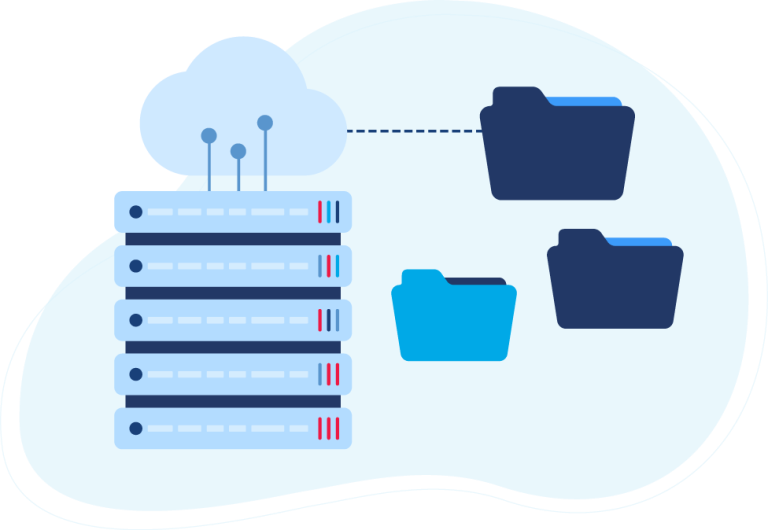Migration vs. Integration: What’s the difference? Often data migration and data integration can be misconstrued as the same thing. But these two data movements are very different from each other. Let’s dig a bit deeper into the differences between data migration and data integration and what it takes to implement any of these processes.
The confusion is understandable as both migration and integration involve the moving of data. If anyone understands this common mix-up, it’s VL OMNI. As experts in data integration, every so often a migration request mistakenly ends up with us. In this blog, we will compare what each process is and what it can do for your business.
For a quick explanation, watch our Implementation Coordinator explain the differences between data integration and data migration below. Keep reading for a more in-depth explanation.
What is Data Migration?
Migration means moving data from one place to another.
Data migration is the act of taking data from one location, let’s say an ecommerce platform. Then, moving it to an entirely new location or in this example, a different ecommerce platform.
Data migration is not integration. A clear example is when a Merchant is re-platforming their eCommerce store, for example from Magento to Shopify Plus. When re-platforming occurs, migration is often necessary. In cases such as these, the intent is to migrate the data to the new system because the original system will no longer be used or maintained. However, data integration is a completely different process that is separate from re-platforming data.
How Data Migration Works
While some data cleansing, unification, and field matching may happen as a part of this broader process, the core of the data is not being modified. Migration, by nature, works with existing (historic) data. Migrating data may seem fairly simple so far but it can often be a very complicated endeavour. There are rarely two systems alike, meaning, how data is structured and stored in one place will not be the same on the other.
Data Migration Challenges
Going back to our ecommerce example above, let’s imagine each system as an individual bookshelf; each book on each of those shelves is your data. The bookshelf you’ve been using has shelves spaced at specific heights, but the new bookshelf doesn’t use the same distance between shelves. Now what? You have to get all the books on the new shelf but it requires re-organizing the books entirely to do so.
This re-organizing of books (i.e. data) becomes the primary challenge of data migration. Finding a place for all your data, without any sort of data transformation (again, migration alone often doesn’t allow for this) can leave your data mixed up, incorrect, or missing altogether.
All this isn’t to say data migration should be avoided entirely. Rather, migration has a very specific purpose for when you absolutely have to move your data, permanently. For example, your existing ecommerce service is shutting down and you have no choice but to get your data onto another platform. In cases like these, migration is your only option.
Do You Even Need To Migrate?
So if you are wondering what the right data movement is for your business, think about your long-term goals. Data migration allows you to take existing data and simply move it as is from System A to System B. But if you are looking for a solution that is better than custom, then data integration is the best option for you. You have endless options when it comes to changing data as your business grows and expands in the future
What is Data Integration?
At its most basic, data integration is less about moving data and more about sharing it between systems. Data does move, but unlike migration, it is not a one-way journey. Information continuously moves between applications, channels, and trading partners from one system to the next; each one using the data in its own way.
Data integration is less about permanently moving data and more about sharing it between systems.
The simplest example of this can be when your online store makes a sale. Your ecommerce system would send order details to your fulfillment system so the customer’s product gets shipped to them. In turn, the fulfillment system would send an update back to your store with a tracking number that will come up in the order details.
Endless Possibilities with Data Integration
Data integration allows you to seamlessly connect your applications and back-end systems together, allowing the flow of data to various applications. Not only does this reduce the amount of manual data errors and save valuable time and money. When Merchants look at their data and flows strategically, data integration can be used in a myriad of strategic ways to build an exceptional customer experience. This includes having the ability to modify or transform your data while in transit between systems.
In the world of VL OMNI, we move data between applications (either one-to-one, or one-to-many), but we also apply discreet business rules to the data as it moves, fundamentally changing the data itself. Data integration is a present and future-looking process, while data migration is a more static packaging and moving process.
How Data Integration Works
Let’s say you have a modern eCommerce platform that needs to communicate with an older EDI (Electronic Data Interchange) system. By nature, EDI systems are very structured in how they handle data. Then, let’s consider ship methods and variable naming conventions between applications. Your eCommerce platform could call your ship methods one thing, while the EDI system is looking for very exact names. Data integration allows you to take those eCommerce names and convert them to the proper EDI phrasing, passing the data along correctly every time.
By modifying what it moves, data integration has a broader impact on your business. Customer experience can be honed through how your data is automated between your eCommerce platform and back-end technologies. Business intelligence becomes more strategic with data moving to and from all your applications. Great data integrators like VL OMNI will arrange your applications to match corporate strategy to maximize growth and agility.
Flat File vs. API Integrations: Which Is Better?
Differences Between Data Migration and Data Integration
Data integration is a strategic endeavour. Data migration is a tactical one.
As a refresher, data migration is taking the existing, historic data and moving it as is from System A to System B. Data integration, in contrast, affords you various options when it comes to changing the data as required.
Integrating data (data integration) has quickly become a vital piece of any business, especially for multichannel retailers. Being able to automate part or all of the supply chain allows your company to scale, grow, and have consistent, clean data to base key business decisions on.
Scalability and growth are vital to keep up in an ever-changing and competitive market, no matter the size of your business. And there are different approaches your business can take depending on its needs and resources.
 D365 Business Central
D365 Business Central Netsuite
Netsuite


